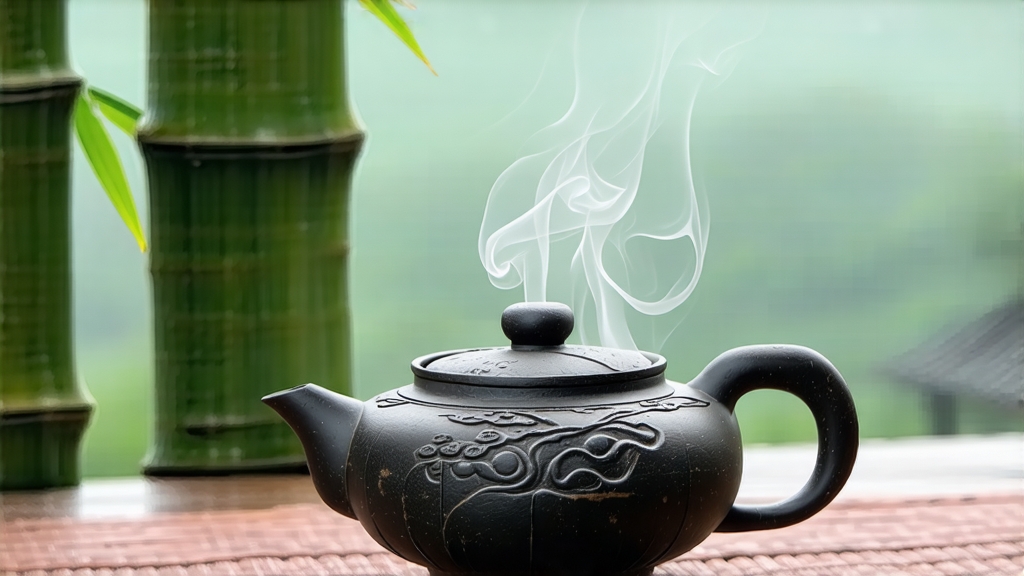
Tucked away in the humid, karst-pocked mountains of southern China’s Guangxi Zhuang Autonomous Region, Liu Bao tea has spent four centuries quietly fermenting its way into the hearts of dockworkers, caravan muleteers, and, more recently, global tea connoisseurs. To the uninitiated it is merely another dark leaf in the sprawling family of Chinese dark teas (hei cha); to those who have met its camphor-betel soul, Liu Bao is a liquid archive of climate, trade routes, and microbial artistry.
History: From Wharf Tea to Treasure
The name Liu Bao literally means “Six Forts,” referring to the six defensive outposts that once guarded the small basin where the tea was first compressed for ease of transport. During the Qing dynasty, Liu Bao was carried by coolies along the 6,000-kilometre Tea-Horse Road, then loaded onto bamboo rafts that drifted down the Liu River to the Pearl Delta and, ultimately, to Southeast Asia. In the humid holds of junks, the tea continued to ferment, arriving in Kuala Lumpur or Singapore with a mellow, medicinal sweetness that dockworkers swore cured dampness and fatigue. By the early twentieth century, Malaysian tin-mine owners were bidding for vintage baskets of Liu Bao the way Parisian merchants chased first-growth Bordeaux. The 1950s saw state-run factories standardise production, but the essential craft—piling, steaming, pressing, and bamboo-basket aging—remained unchanged.
Micro-Terroirs within One County
Modern Liu Bao is still produced only within the 1,300 km² administrative boundary of Cangwu County. Within that radius, three micro-terroirs dominate:
- Gao Chong – 600–800 m elevation, granite soils, morning cloud cover; yields a light, orchid-tinged liquor.
- Da Shan – 400–500 m, lateritic red clay; leaf here is broader, giving a thicker, taro-sweet body.
- He Kou – riverside alluvium, 150–250 m; the warmest micro-zone, producing the most pronounced betel-nut bite.
Farmers usually hedge their bets by blending leaf from all three zones, but single-village cakes are increasingly appearing on specialty menus.
Leaf Material: The Overlooked Cultivars
Unlike puerh, which trumpets its ancient tea trees, Liu Bao is made from a cluster of mid-elevation shrub cultivars collectively called Zhong Ye Zhong (“mid-leaf type”). The most prized is the local “original seed” (yuan zhong), a slow-growing bush whose leaves are smaller, thicker, and richer in methyl salicylate—the compound responsible for Liu Bao’s signature cooling, wintergreen note. Garden managers prune the bushes into waist-high “tables” to encourage lateral buds, then pluck one bud with three or four leaves in late April, when the spring rains pause and the karst cicadas start to sing.
Craft: Where Sun-Withering Meets Wet-Pile Alchemy
The processing choreography follows eight steps, each calibrated to coax microbes without bruising the leaf.
- Solar Withering – Leaves are spread on split-bamboo trays for 3–5 hours until they lose about 15 % moisture; the goal is limpness, not dryness.
- Indoor Wilt – Tray stacks are moved to a ventilated loft for another 4 hours, allowing grassy volatiles to dissipate.
- Kill-Green – A short 3-minute tumble in a 200 °C drum halts oxidation but leaves enzymes active enough for later fermentation.
- Rolling – Light pressure for 8 minutes; cell walls must crack yet stems must remain intact to channel humidity during piling.
- Sun-Drying – The half-made mao cha is returned to the courtyard for a full day’s sun bath, dropping to 9 % moisture.
- Wet Piling – The signature dark-tea step. Five hundred kilograms of dried leaf are sprayed with 120 L of mountain water, then heaped 70 cm high inside a cedar-lined room. Workers “turn” the pile every five days, inserting long thermometers; internal temperature is kept between 55 °C and 60 °C. After 25–30 days the leaf turns chestnut-brown and emits a sweet, almost soy-sauce aroma.
- Steaming & Pressing – The fermented leaf is steamed for 90 seconds, then hand-tamped into 40